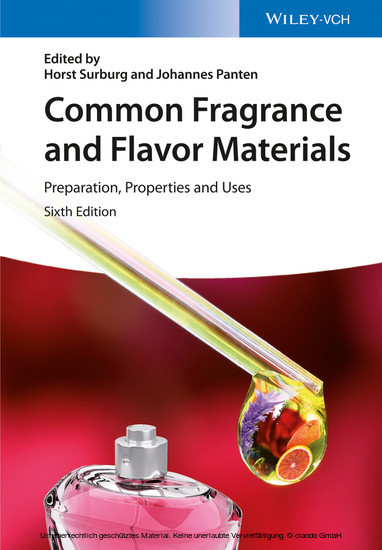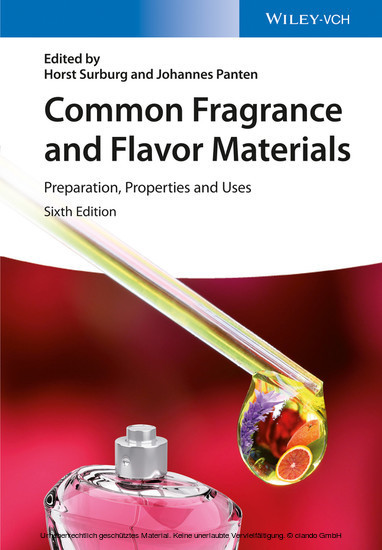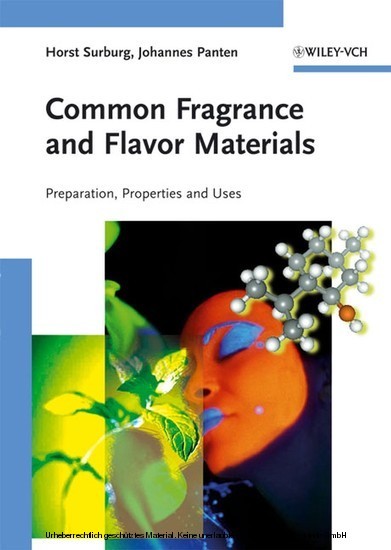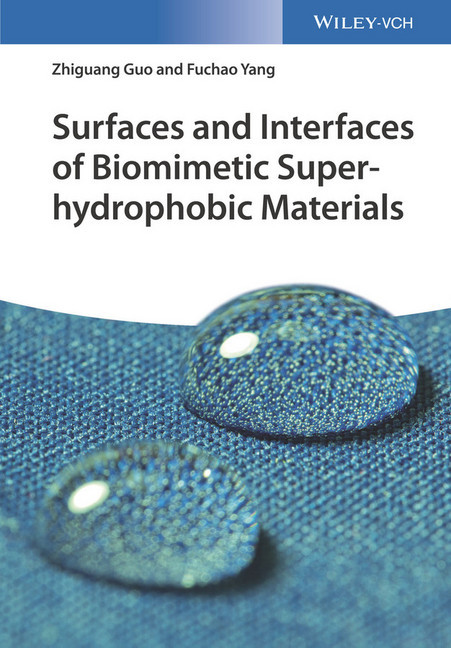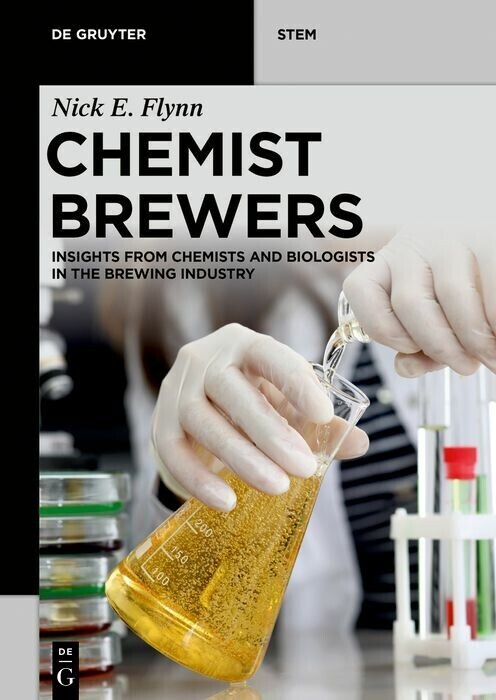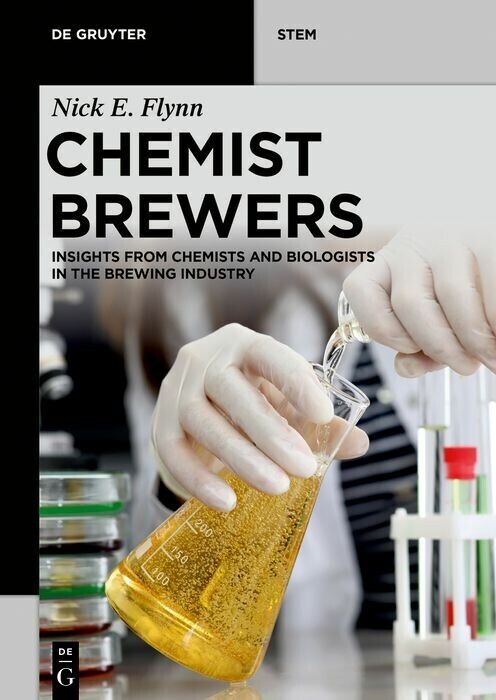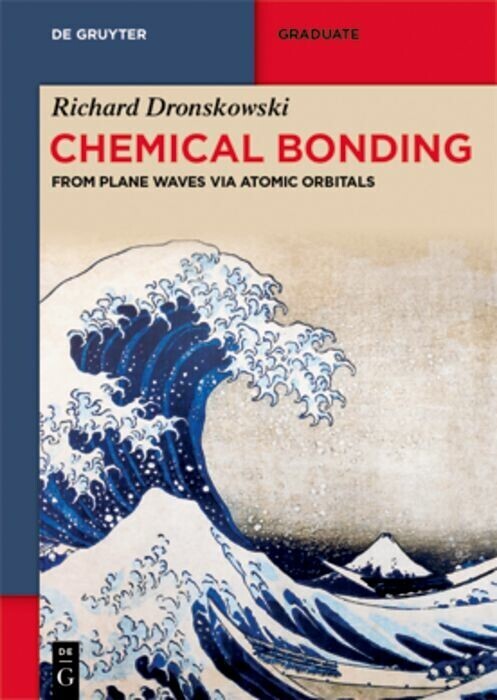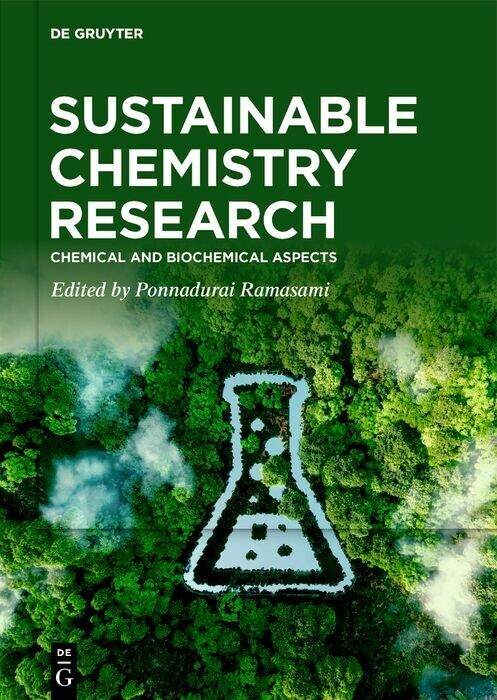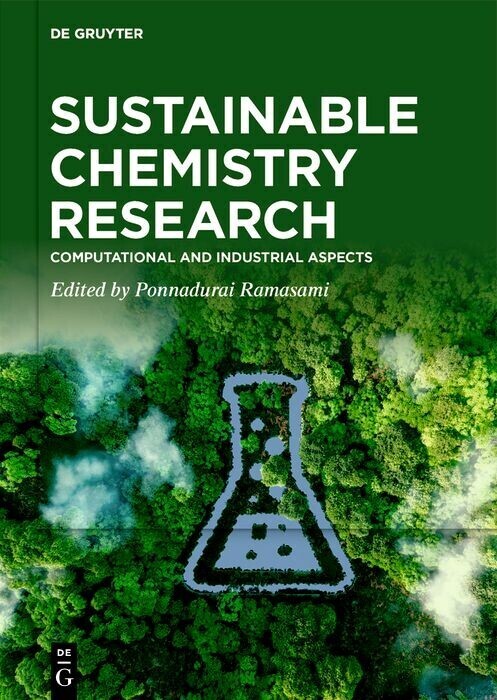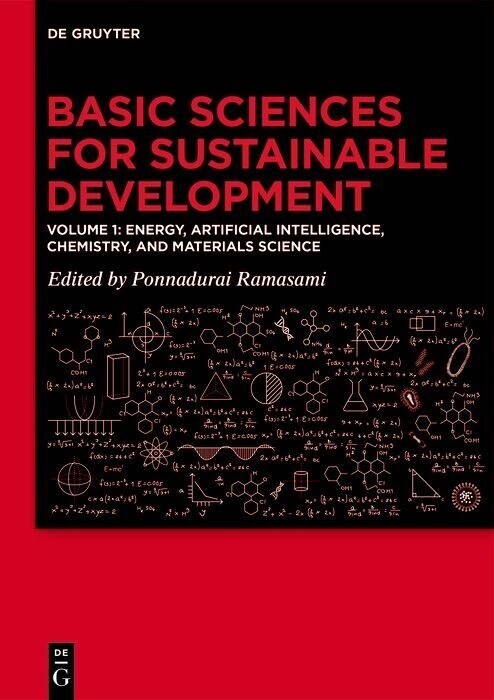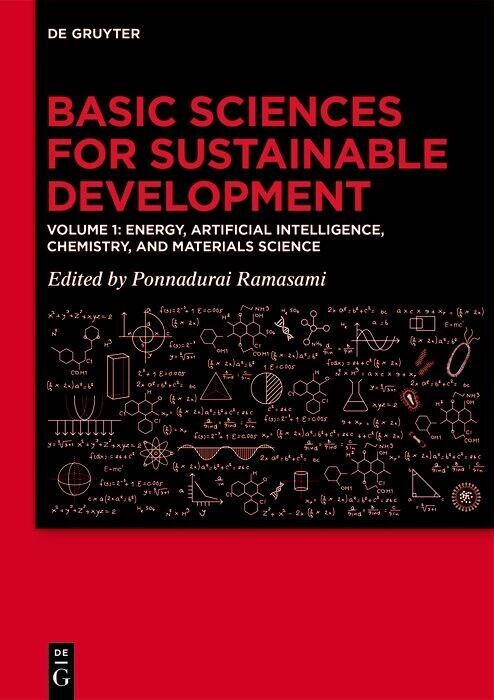Common Fragrance and Flavor Materials
Preparation, Properties and Uses
This 6th edition is thoroughly revised and updated, and now additionally includes all commercially important flavor and fragrance materials that entered the market over the past 10 years.
In one handy and up-to-date source, this classic reference surveys those natural and synthetic materials that are commercially available, produced, and used on a relatively large scale, covering their properties, manufacturing methods employed, and areas of application.
For this new edition the chapter on essential oils has been completely revised with regard to production volumes, availability, and new product specifications, while new legal issues, such as REACH regulation aspects, are now included. Finally, the CAS registry numbers and physicochemical data of over 350 single substances and 100 essential oils have been updated and revised.
Dr. Surburg was senior vice president global innovations of the Scent & Care department at Symrise AG and retired recently. He studied chemistry at Kiel University and joined Haarmann & Reimer (now Symrise) in Holzminden, Germany, in 1980. Horst Surburg originally researched natural chemical materials, before specializing in the synthesis of aromatic and cosmetic substances as well as developing methods for their production. He has been a co-author of Common Fragrance and Flavor Materials since 1990.
Dr. Panten has been head of the New Molecules Fragrances department at Symrise since 2002. He studied chemistry at Kiel University, before joining the R&D department at DRAGOCO (now Symrise) in Holzminden, Germany, in 1991. His main research areas are the synthesis of aromatic substances as well as developing methods for their manufacture.
In one handy and up-to-date source, this classic reference surveys those natural and synthetic materials that are commercially available, produced, and used on a relatively large scale, covering their properties, manufacturing methods employed, and areas of application.
For this new edition the chapter on essential oils has been completely revised with regard to production volumes, availability, and new product specifications, while new legal issues, such as REACH regulation aspects, are now included. Finally, the CAS registry numbers and physicochemical data of over 350 single substances and 100 essential oils have been updated and revised.
Dr. Surburg was senior vice president global innovations of the Scent & Care department at Symrise AG and retired recently. He studied chemistry at Kiel University and joined Haarmann & Reimer (now Symrise) in Holzminden, Germany, in 1980. Horst Surburg originally researched natural chemical materials, before specializing in the synthesis of aromatic and cosmetic substances as well as developing methods for their production. He has been a co-author of Common Fragrance and Flavor Materials since 1990.
Dr. Panten has been head of the New Molecules Fragrances department at Symrise since 2002. He studied chemistry at Kiel University, before joining the R&D department at DRAGOCO (now Symrise) in Holzminden, Germany, in 1991. His main research areas are the synthesis of aromatic substances as well as developing methods for their manufacture.
1;Cover;12;Title Page;73;Copyright;84;Contents;95;Preface;236;Chapter 1 Introduction;316.1;1.1 History;316.2;1.2 Definition;326.3;1.3 Physiological Importance;326.4;1.4 Natural, Nature-Identical, and Artificial Products;336.5;1.5 Sensory Properties and Chemical Structure;336.6;1.6 Volatility;346.7;1.7 Threshold Concentration;346.8;1.8 Sensory Properties;346.8.1;1.8.1 Fragrance Ingredients;356.8.2;1.8.2 Flavoring Substances;367;Chapter 2 Individual Fragrance and Flavor Materials;377.1;2.1 Aliphatic Compounds;387.1.1;2.1.1 Hydrocarbons;387.1.1.1;2.1.1.1 (E,Z)-1,3,5-Undecatriene [51447-08-6];387.1.1.2;2.1.1.2 1,3-Undecadien-5-yne [166432-52-6];397.1.2;2.1.2 Alcohols;397.1.2.1;2.1.2.1 3-Octanol [589-98-0];397.1.2.2;2.1.2.2 2,6-Dimethyl-2-heptanol [13254-34-7];407.1.2.3;2.1.2.3 (E)-2-Hexen-1-ol [928-95-0];407.1.2.4;2.1.2.4 (Z)-3-Hexen-1-ol [928-96-1], Leaf Alcohol;407.1.2.5;2.1.2.5 1-Octen-3-ol [3391-86-4];407.1.2.6;2.1.2.6 9-Decen-1 (cipher)-ol [13019-22-2];417.1.2.7;2.1.2.7 10-Undecen-1-ol [112-43-6];417.1.2.8;2.1.2.8 3,4,5,6,6-Pentamethylheptan-2-ol [87118-95-4];417.1.2.9;2.1.2.9 (2E,6Z)-2,6-Nonadien-1-ol [28069-72-9], Violet Leaf Alcohol;417.1.2.10;2.1.2.10 4-Methyl-3-decen-5-ol [81782-77-6];427.1.3;2.1.3 Aldehydes and Acetals;427.1.3.1;2.1.3.1 Hexanal [66-25-1], Caproaldehyde, Aldehyde C6;437.1.3.2;2.1.3.2 Octanal [124-13-0], Caprylaldehyde, Aldehyde C8;437.1.3.3;2.1.3.3 Nonanal [124-19-6], Pelargonaldehyde, Aldehyde C9;437.1.3.4;2.1.3.4 Decanal [112-31-2], Caprinaldehyde, Aldehyde C10;447.1.3.5;2.1.3.5 Undecanal [112-44-7], Aldehyde C11;447.1.3.6;2.1.3.6 Dodecanal [112-54-9], Lauraldehyde, Lauric Aldehyde, Aldehyde C12;447.1.3.7;2.1.3.7 Tridecanal [10486-19-8];447.1.3.8;2.1.3.8 2-Methyldecanal [19009-56-4], Methyloctylacetaldehyde, Aldehyde MOA;447.1.3.9;2.1.3.9 2-Methylundecanal [110-41-8], Methylnonylacetaldehyde, Aldehyde MNA;457.1.3.10;2.1.3.10 (E)-2-Hexenal [6728-26-3], Leaf Aldehyde;467.1.3.11;2.1.3.11 (Z)-4-Heptenal [6728-31-0];467.1.3.12;2.1.3.12 2,6-Dimethyl-5-hepten-1-al [106-72-9];467.1.3.13;2.1.3.13 (E)-4-Decenal [65405-70-1];467.1.3.14;2.1.3.14 10-Undecenal [112-45-8];477.1.3.15;2.1.3.15 2-Dodecenal [20407-84-5];477.1.3.16;2.1.3.16 2,6,10-Trimethyl-5,9-undecadienal [24048-13-3] and [54082-68-7];477.1.3.17;2.1.3.17 1,1-Dimethoxy-2,2,5-trimethyl-4-hexene [67674-46-8];477.1.4;2.1.4 Ketones;487.1.4.1;2.1.4.1 3-Hydroxy-2-butanone [52217-02-4], Acetoin;487.1.4.2;2.1.4.2 2,3-Butanedione [431-03-8], Diacetyl;487.1.4.3;2.1.4.3 (2E)-5-Methyl-2-hepten-4-one [81925-81-7];487.1.4.4;2.1.4.4 3,4,5,6,6-Pentamethyl-3-hepten-2-one [81786-73-4];497.1.4.5;2.1.4.5 2,4,4,7-Tetramethyl-6-octen-3-one [74338-72-0];497.1.5;2.1.5 Acids and Esters;507.1.5.1;2.1.5.1 2-Methyl-2-pentenoic Acid [3142-72-1];507.1.5.2;2.1.5.2 Ethyl Formate [109-94-4];517.1.5.3;2.1.5.3 (Z)-3-Hexenyl Formate [33467-73-1];517.1.5.4;2.1.5.4 Ethyl Acetate [141-78-6];517.1.5.5;2.1.5.5 Butyl Acetate [123-86-4];517.1.5.6;2.1.5.6 Isoamyl Acetate [123-92-2];517.1.5.7;2.1.5.7 Hexyl Acetate [142-92-7];517.1.5.8;2.1.5.8 3,5,5-Trimethylhexyl Acetate [58430-94-7], Isononyl Acetate;517.1.5.9;2.1.5.9 (E)-2-Hexenyl Acetate [2497-18-9];527.1.5.10;2.1.5.10 (Z)-3-Hexenyl Acetate [3681-71-8];527.1.5.11;2.1.5.11 Ethyl Propionate [105-37-3];527.1.5.12;2.1.5.12 Ethyl Butyrate [105-54-4];527.1.5.13;2.1.5.13 Butyl Butyrate [109-21-7];527.1.5.14;2.1.5.14 Isoamyl Butyrate [106-27-4];537.1.5.15;2.1.5.15 Hexyl Butyrate [2639-63-6];537.1.5.16;2.1.5.16 (Z)-3-Hexenyl Isobutyrate [41519-23-7];537.1.5.17;2.1.5.17 Ethyl Isovalerate [108-64-5];537.1.5.18;2.1.5.18 Ethyl 2-Methylbutyrate [7452-79-1];537.1.5.19;2.1.5.19 Ethyl Hexanoate [123-66-0], Ethyl Caproate;537.1.5.20;2.1.5.20 Ethyl 2-Methylpentanoate [39255-32-8];547.1.5.21;2.1.5.21 2-Propenyl Hexanoate [123-68-2], Allyl Caproate;547.1.5.22;2.1.5.22 Ethyl Heptanoate [106-30-9], Ethyl Enanthate;547.1.5.23;2.1.5.23 2-Propenyl Heptanoate [142-19-8], Allyl Heptanoate, Allyl
| ISBN | 9783527693177 |
|---|---|
| Artikelnummer | 9783527693177 |
| Medientyp | E-Book - PDF |
| Auflage | 6. Aufl. |
| Copyrightjahr | 2016 |
| Verlag | Wiley-VCH |
| Umfang | 392 Seiten |
| Sprache | Englisch |
| Kopierschutz | Adobe DRM |

